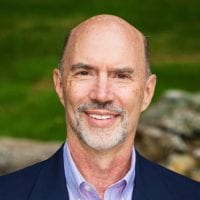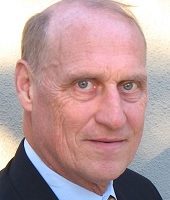
Brian Steel is the Director of the Cleantech to Market program to which he brings 35 years of business innovation and leadership experience. He is a repeat member of the Haas “Club of 6” for teaching excellence. Brian is a member of the investment advisory board of the Commonwealth Energy Fund and was a founding member of the external advisory board of the Innovation Incubator (a Wells Fargo/NREL joint venture).
Brian has served as an advisor to the Department of Energy, working on both renewable energy financing and solar initiatives and was Senior Advisor to the Renewable Energy Trust and an advisor to the Berkeley Startup Cluster. Prior to joining the UC Berkeley faculty, Brian was Vice President of Corporate Strategy & Development for PG&E Corporation, where he led the energy industry’s first tax-equity solar project financing by an investor-owned utility, investing $400 million in nearly $1 billion of photovoltaic assets from 2010-2011.
Brian is also a co-founder of Hypatia Project, a software engineering firm that builds advanced technologies for public benefit missions around the globe, including the U.S. Joint Artificial Intelligence Center. Prior roles include Chairman, International, Pandora Media – the world’s leading Internet radio company; President, International, Overture Services – building a billion-dollar division of Yahoo! with operations in 20 countries; President and CEO, Idealab Silicon Valley and Managing Director of Idealab; and President and COO, On Command. Previously, Brian was Senior Vice President and co-head of the Real Estate Merchant Banking Group at Shearson Lehman Brothers. He has served on the boards of more than 20 early-stage technology companies, several of which went public, and many of which had successful acquisition exits. His separate private investments include Back to the Roots (Haas-founded startup), Bay Area Panera restaurants, Birdies, LiveOps, and Powerset (sold to Microsoft). Brian holds a BA magna cum laude in
Economics from Duke University, where he was an Angier B. Duke Scholar.
Send an email to [email protected]

Bill Shelander joined the C2M faculty in 2016 after serving as an advisor and mentor to the program since 2010. Bill brings hands-on proficiency at the earliest stages of emerging technologies and venture funding. He is also teaching the Environmental Entrepreneurship and Innovation program at Stanford University’s School of Civil and Environmental Engineering.
Bill was a commercialization expert for Berkeley Lab (2010-2015), working with researchers in fundamental energy science to utilize discoveries in new business activities. He helped create and obtain external funding for dozens of startups involving diverse technologies (from industrial-scale microbiology and DNA diagnostics to thin film oxides and high-performance supercomputers).
Previously, Bill served on a White House Office of Science & Technology Policy panel to improve technology transfer of basic research. Between 1986 and 2007, he was a managing director of venture capital funds from the U.S., Japan, Taiwan and China. He has served on the boards of several NASDAQ-listed companies. Bill is an active entrepreneur who has co-founded several successful “hard” technology companies, including Mango Materials, whose process converts methane into polyhydroxyalkanoate (PHA) a multi-application biodegradable polymer, which is recognized as one of the “Global Cleantech 100” for 2021, and Anven Biosciences, which has created a fundamentally new approach to rapidly developing novel and more effective therapeutics involving the creation of highly specific bio-functional molecules. Bill holds an MBA from Stanford University, an MS Engineering from West Virginia College of Graduate Studies, and a BS Systems Engineering from the Georgia Institute of Technology.
Send an email to [email protected]

